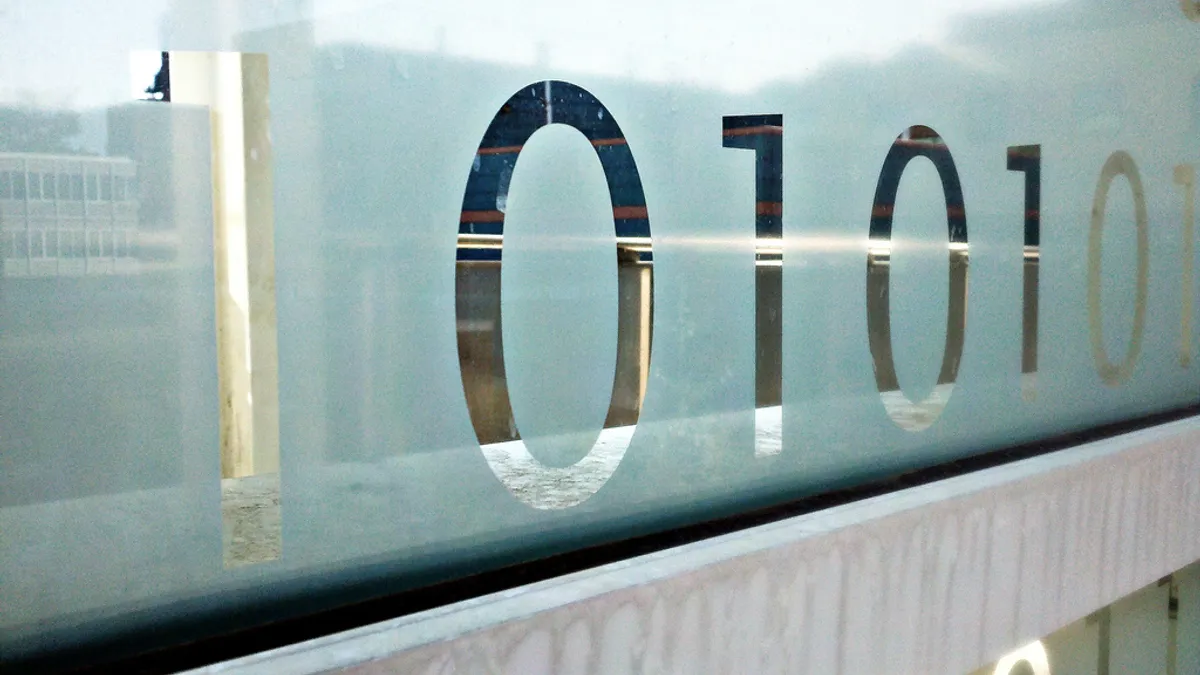The following is a guest post from Justin O’Sullivan, owner of Storage Equipment Experts.
By this time next year, we may well have an entirely different kind of supply chain: one that’s automated, connected, and operated entirely by a mobile app. It sounds like an ambitious claim, and it is. Still, it is by no means a claim to be taken lightly, not when some of the biggest businesses in the world are all leaning towards this very idea.
To figure out how we got here, we need to go back — way back to the year 1999.
The birth of the “Internet of Things”
Before the turn of the new millennium, the internet was still pretty much in its infancy. We had web browsers, we had Google (albeit in a much uglier form), but most of us we’re still using dial-up, the iPhone was still eight years away, and the whole experience was still very much rooted to a clunky desktop computer.
Even still, there were some who saw past all this and recognised what the internet could be. One such fortune teller was Kevin Ashton who, nearly twenty years ago now, first coined the term “the Internet of Things”. To Ashton, the internet promised a revolution that extended far beyond the keyboard and screen experience that so many people still associate with the word “internet”.
Rather, Ashton imagined a world where input meant much more than information typed into a keyboard and where machines far more varied than computers were connected to each other via the internet. The internet of things refers to an internet where phones, vacuum cleaners, and cars can talk to each other with the same speed and ease that computers speak to each other now.
When are we going to see self-driving cars?
This isn’t the future, really. The internet of things is already here. Phones and mobile devices are now a more common gateway to the internet than computers are, Neato released an internet connected vacuum cleaner last year, and the self-driving internet connected car?
It’s on its way, but when exactly that will be depends on who you ask. According to Ford? 2021. According to Google? 2020. According to Baidu? 2019. And according Elon Musk? 2017.
Taken together, these predictions suggest that self-driving cars will become commercially available in at least the next five years. Yet, if Musk is right, if 2017 really is the year for self-driving car, then it’s worth thinking about what this will mean for the supply chain sooner rather than later.
After all, self-driving cars aren’t the only potentially automatable part of the supply chain. Back in 2014, vlogger CGP Grey made a powerful case for how (more or less) the entire working world could be replaced by automation in a video he rather ominously titled “Humans Need Not Apply.”
This isn’t the future, really. The internet of things is already here.

Justin O'Sullivan
Owner, Storage Equipment Experts
Even if both Grey and Musk are wrong about the future, there is a definite trend emerging here. The supply chain will become less human, more connected to an internet of things, and — as a result — safer.
What is more, the safety aspect highlights yet another piece of technology which has the potential to radically modify the supply chain. Drones, yet another important part of the internet of things, have been around for several years now. In fact, it was as early as 2011 that San Francisco based startup Tacocopter first promised to deliver tacos to a GPS location on your smartphone by drone. That, in a nutshell, is the internet of things. That, in a nutshell, is the future of the supply chain.
Or is it? After all, 2011 was a long time ago and Tacocopter is still stuck in its “beta-phase”. What’s going on here?
Drones are dangerous, yet they could also make us safer...
As great as tech-lovers may think drones are, the US government disagrees and FAA safety regulations continue to prevent drones from being used for commercial purposes. This could, however, all change. First, there is the fact that — in the five years since Tacocopters creation — many other big companies have jumped on the drone delivery bandwagon. Alphabet, Chipotle, and Amazon are just three of the many commercial giants promising to use drone delivery in the future.
Second, there are the steps being made to improve the safety of drones. Recognising both the FAA’s and the public’s concerns, Echodyne have been a radar tracking system in order to make drones safer. Only time will tell if this technical breakthrough is enough to make drones a logistically sensible option for delivery.
If the current pace of things keeps up, 2017 will be the year when the new breed of supply chain takes its first steps.

Justin O'Sullivan
Owner, Storage Equipment Experts
Finally, there is the fact that drones have the potential to be useful in more than just the delivery side of the supply chain. At 2015’s SEMA Safety Conference, Steve Cowen (a supply chain safety expert) talked about the possibility of using drones for racking inspection services. The idea is that a drone operated by a safety inspector would be able to perform supply chain safety inspections quicker than one person could. This would save time and, more than that, it would eliminate the need for safety inspectors to enter unsafe environments.
Taken together, all of these signs point to a supply chain containing drones, self-driving cars, and an internet of things connecting it all. Moreover, it looks as if we’re going to be seeing all of this change sooner rather than later. If the current pace of things keeps up, 2017 will be the year when the new breed of supply chain takes its first steps.
Justin O’Sullivan is a SEMA approved racking inspector and the owner of Storage Equipment Experts. Justin’s London-based business provides a range of racking inspection services to companies across the UK.













